DEFINITION OF TERMS:
- KEYSTONE means they are listed by National Wildlife Federation as core plants for a wildlife garden in my ecoregion (Ecoregion 8).
- NOT QUITE NATIVE means they are slightly out of range but adjacent to NYS as determined by GoBotany and NY Flora Atlas.
- Otherwise the plant is a NY-native or native to the area noted.
Obedient plant (Physostegia virginiana ‘Bouquet Rose’ and ‘Rose Crown’)
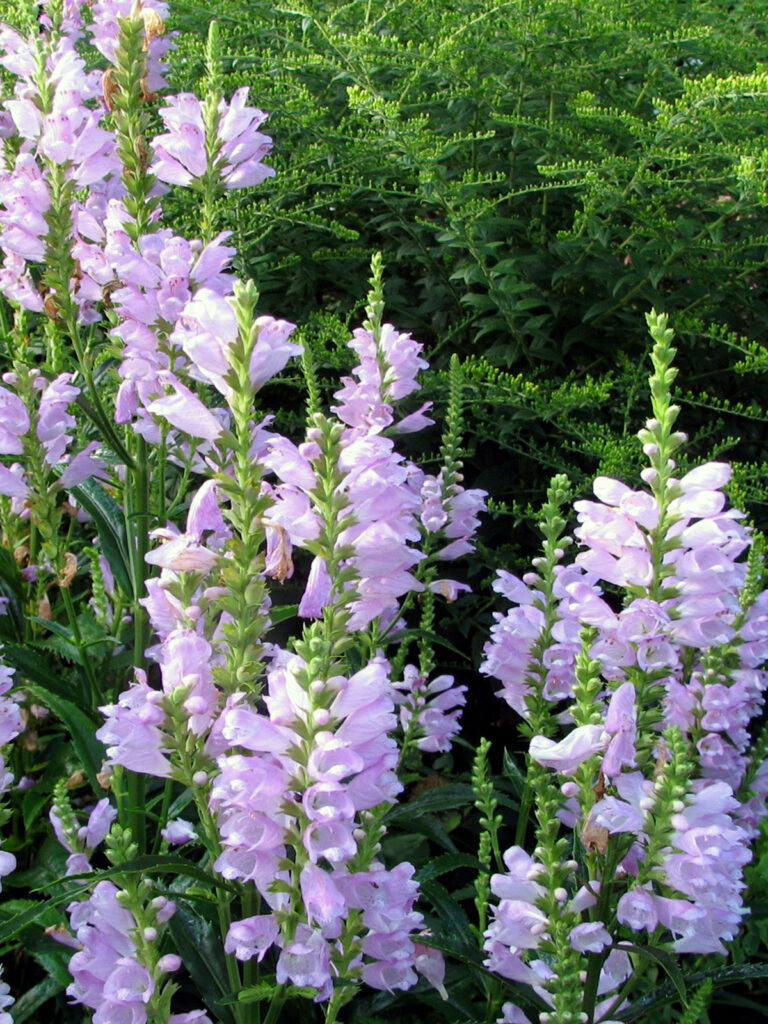
I’ve bought both the cultivars ‘Bouquet Rose’ and ‘Rose Crown’ before I knew that cultivars can be problematic. I’ve never seen the species available for sale.
Lots of people won’t plant obedient plant since they find that it’s not very obedient, becoming a plant thug. I removed it from where I initially planted it since it was outcompeting other plants, and I’ve planted it in the hellstrip and along the far end of the road where little else will grow. It’s a beautiful flower, and the hummingbirds and bees love it!
So why do they call it “obedient” plant if it isn’t obedient? Because you can move each floret and it stays where you put it! Fun with plants!
Wildlife: Hummingbirds, butterflies
Deer resistance: High
- Learn more:
- Wildflower Center: Obedient plant
American pokeweed (Phytolacca americana)
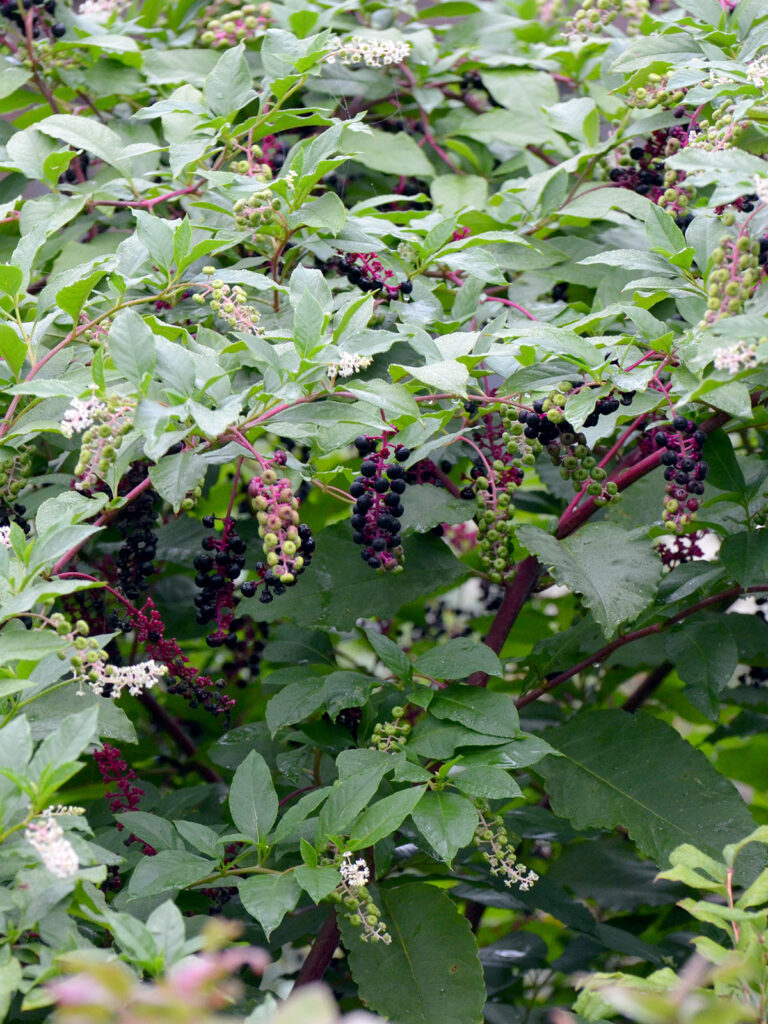
You generally won’t find pokeweed in any native plant gardening books, even though it’s native.
I suppose you could call it a “weed” — a plant we didn’t plant intentionally, but which grows wherever its seeds happen to land — but it’s actually quite handsome.
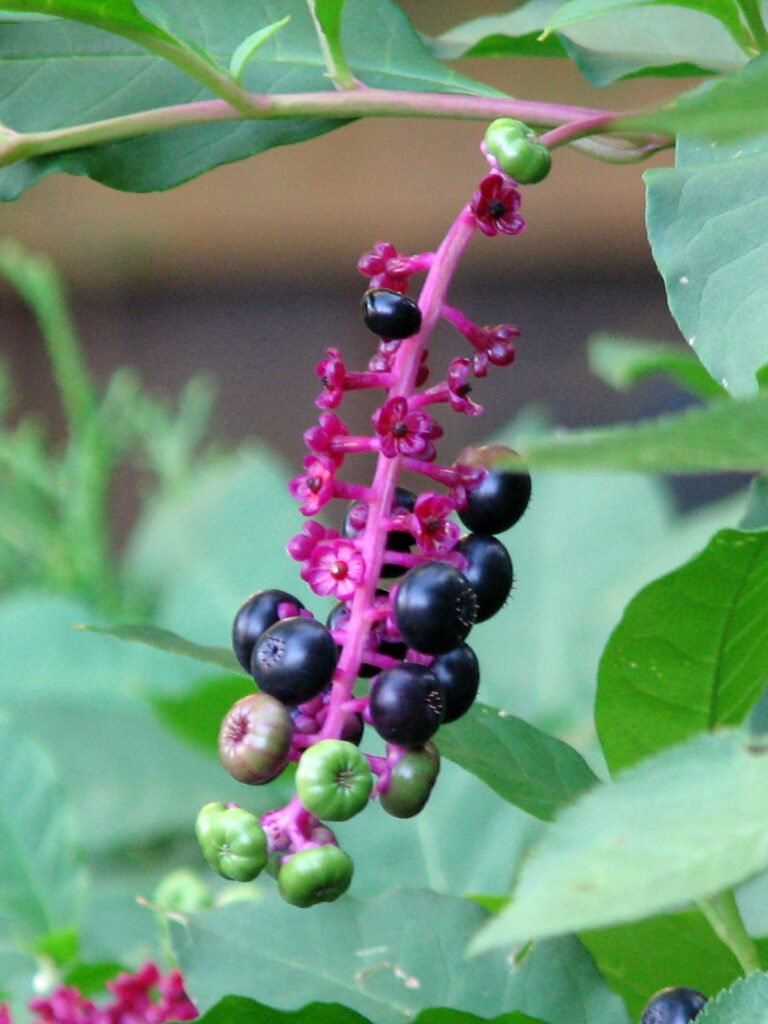
The berries are interesting at all stages—even after they’ve been gobbled up. It’s a favorite bird food, so we let a few of these large plants remain in out-of-the-way places.
But all parts of the plant are poisonous — true of many plants, native and non-native — so sadly, we’ve worked to eradicate much of it.
Wildlife: Berries for birds
Deer resistance: High
- Learn more:
- Wildflower Center: Pokeweed
- Hilton Pond Center: Pokeweed’s benefits for birds; EXCELLENT photos
- Humane Gardener:
Mayapple (Podophyllum peltatum)
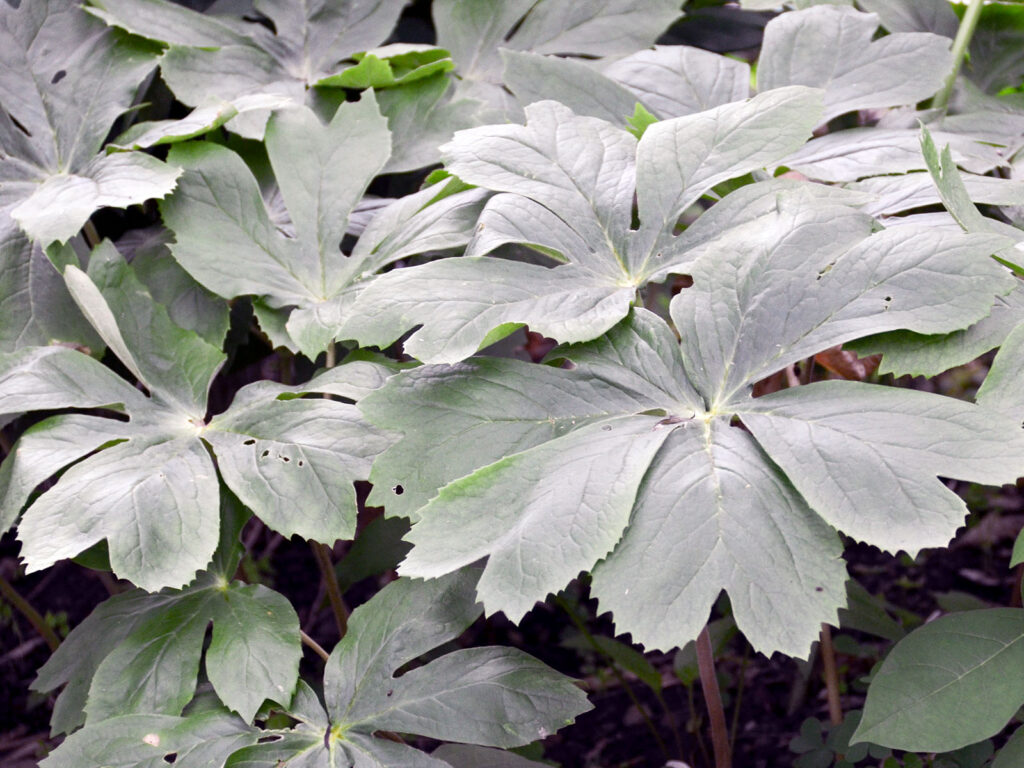
Part of a mayapple colony that started years before as a single plant.
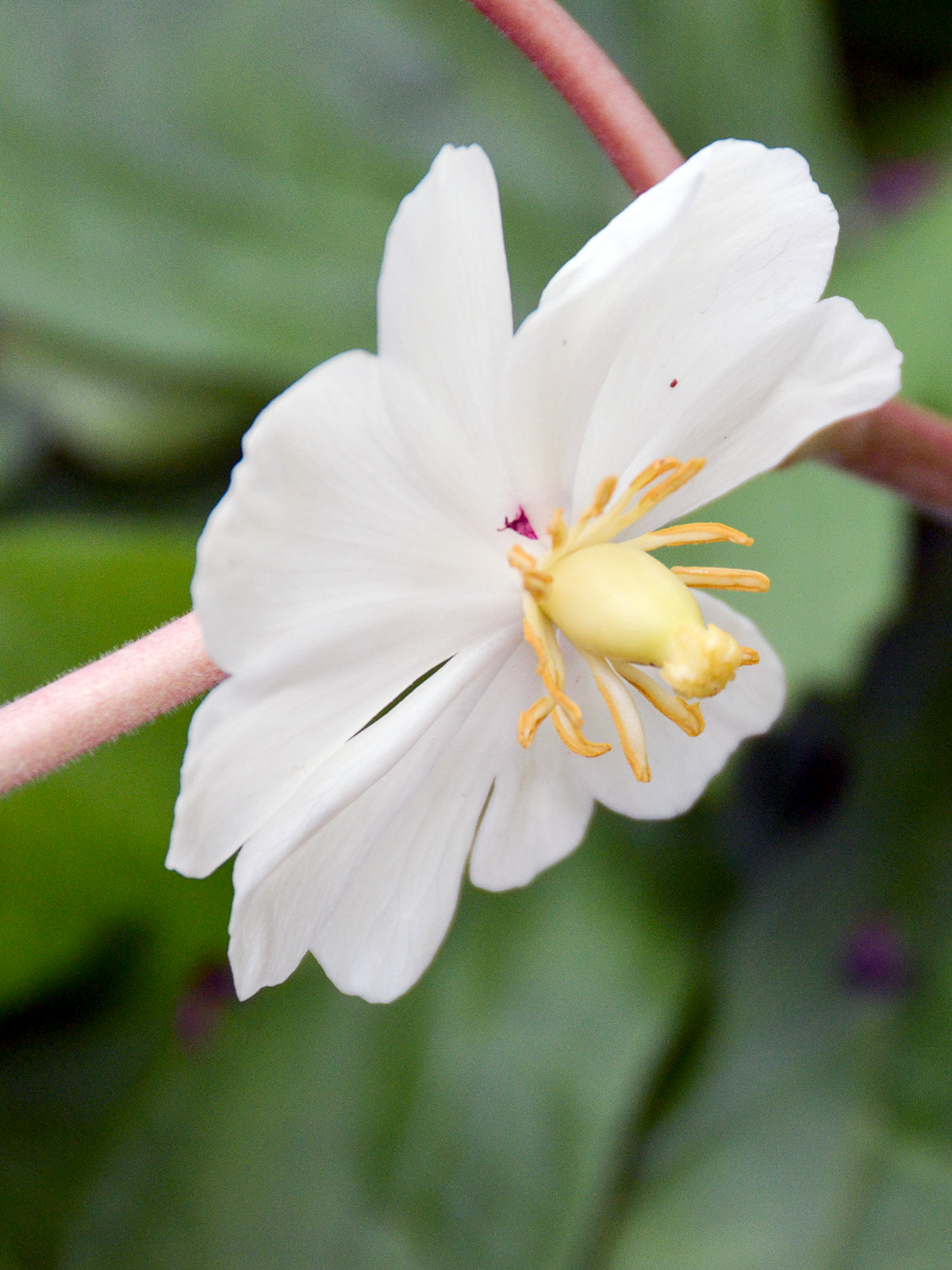
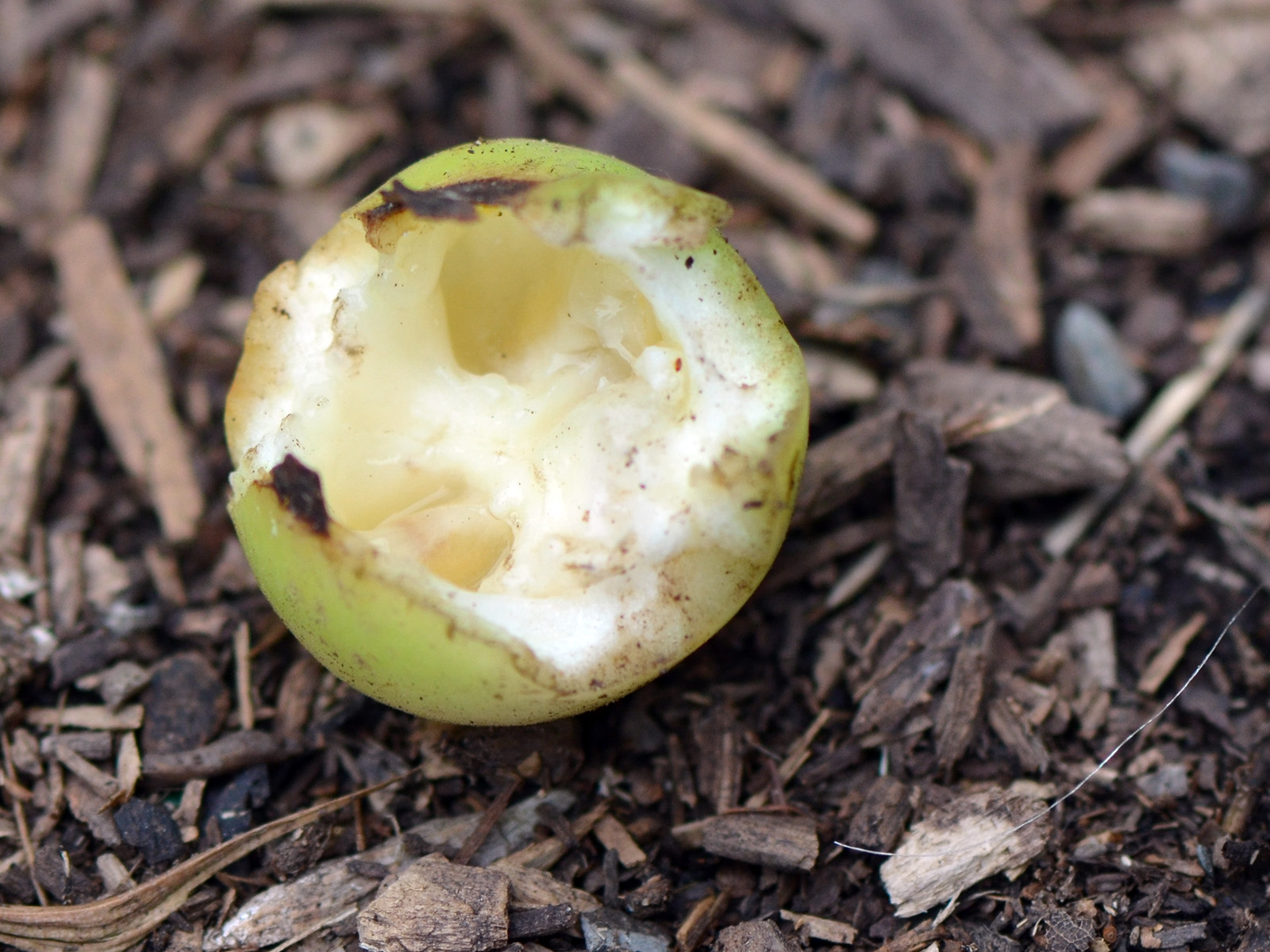
- Learn more:
- Wildflower Center: Mayapple
- EcoBeneficial: Short video
Smooth Solomon’s seal (Polygonatum biflorum)
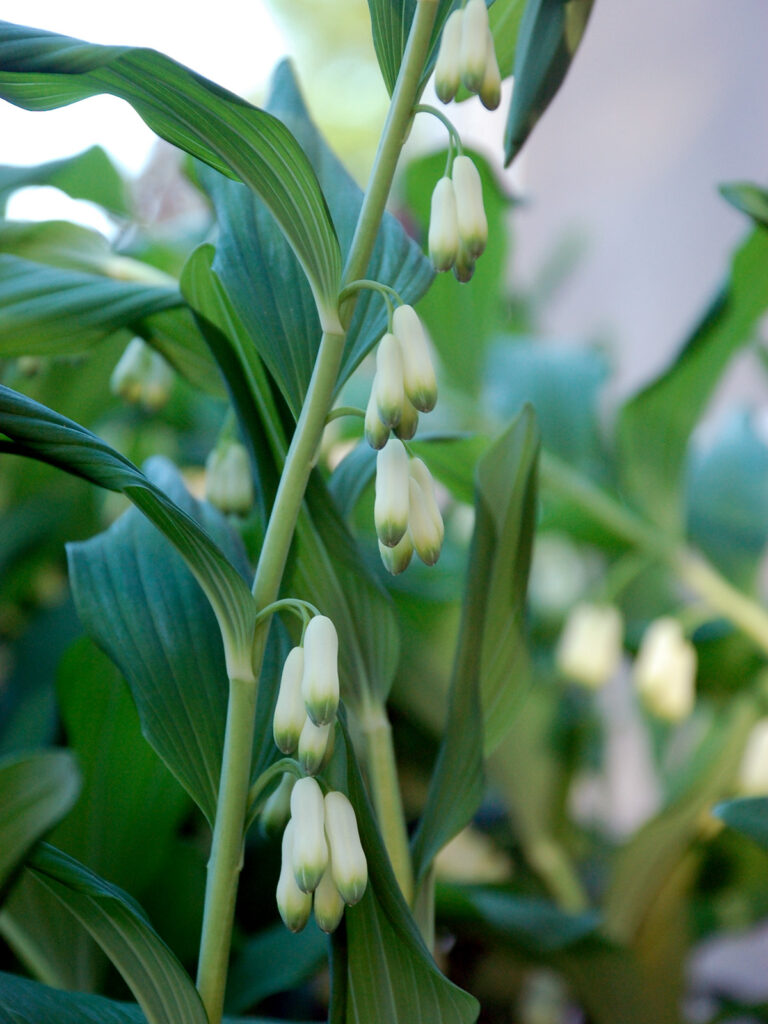
This Solomon’s seal, not surprisingly, is much shorter than the giant Solomon’s seal. It has the same elegance as the giant form.
I can’t believe I used to think (back in my ornamental gardening days) that Solomon’s seal was boring. Why would anyone plant something with such little flowers? Now I value it as one of the most elegant plants I have. I love the foliage, the graceful curve of the stem, and the lovely little flowers. I also enjoy seeing the bees work their way into the blossom to get the nectar.
Butterflies, berries for birds; roots used by mammals
- Learn more:
- Wildflower Center: Smooth Solomon’s seal
Great Solomon’s seal (Polygonatum biflorum var. commutatum)
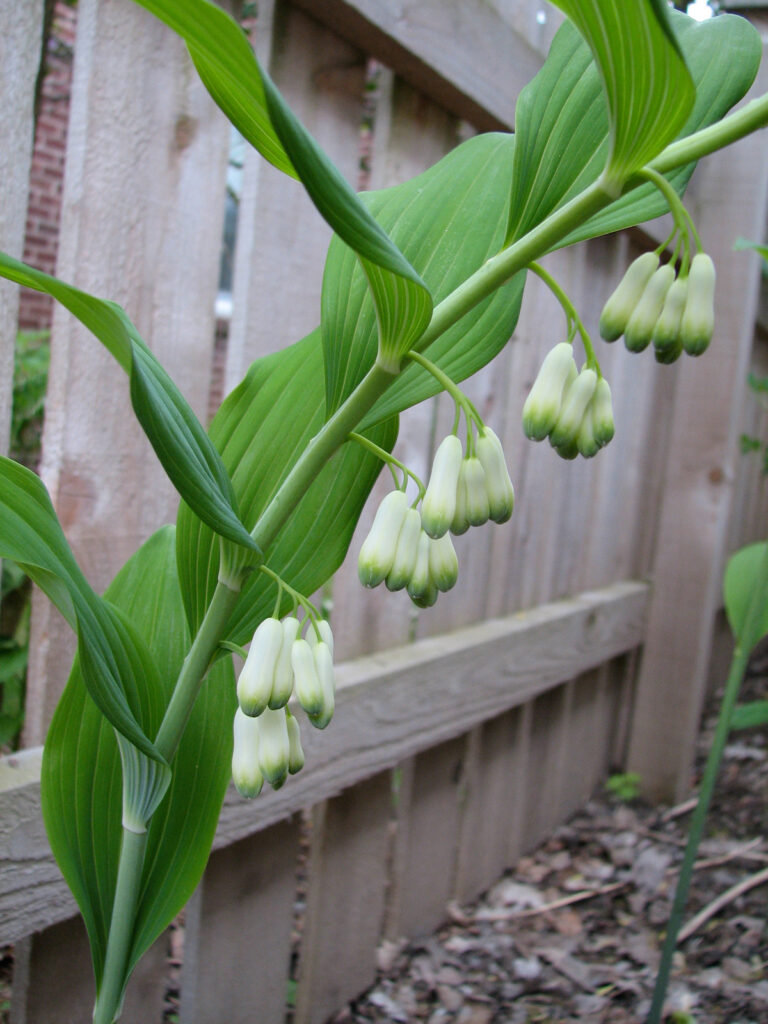
This type can indeed become quite tall — 7 feet isn’t an exaggeration! But we planted it along the fence between the fence and porch and it works well there. A beautiful plant!
- Learn more:
- Wildflower Center: Great Solomon’s seal
Bowman’s root (Porteranthus trifoliatus Syn: Gillenia trifoliata)
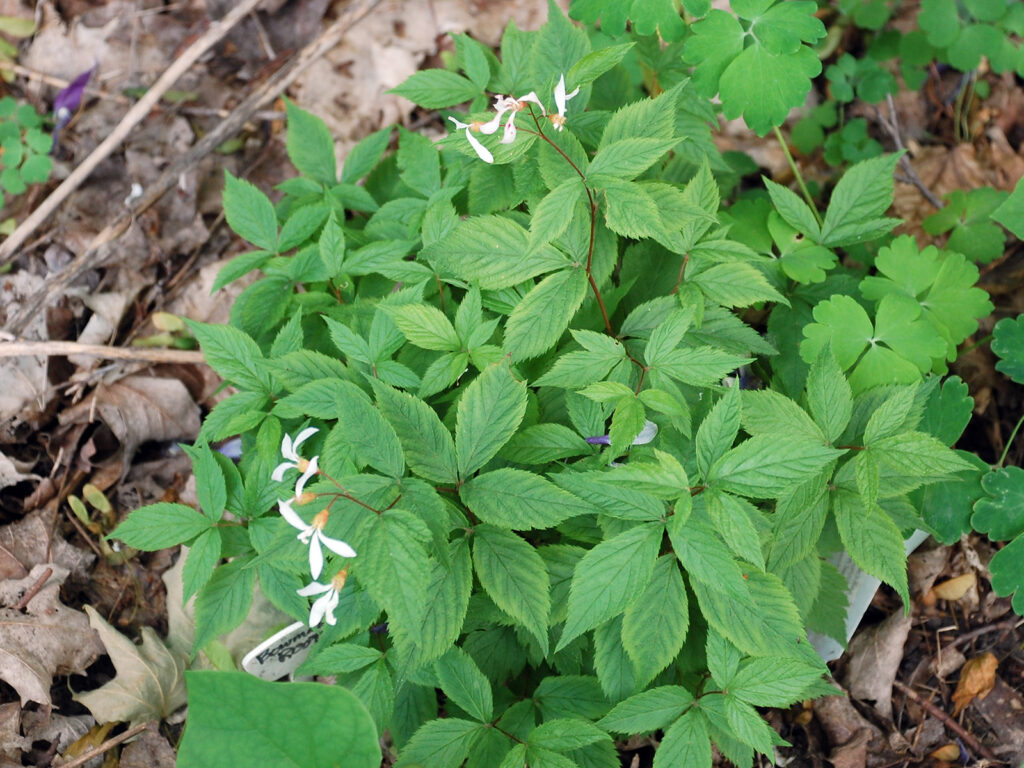
This shows the plant in its first year. When it matures, it will be covered with these slight white flowers, their profuseness making up for their slightness.
This is another plant I allowed to become overwhelmed by more aggressive neighbors. I’m either going to find its remnants and nurture it back to health or buy another one.
- Learn more:
- Wildflower Center: Bowman’s root
Mountain mints (Pynanthemum)
A wonderful group of plants!
Good if it works! I haven’t tried this yet, but I’ve read that it is “loaded with pulegone, the same insect repellent found in pennyroyal. It can be rubbed on the skin to repel mosquitoes.”
This is not the culinary herb most people are familiar with, though many websites indicate it is edible. I’ve never tried it, and I’m content to leave it for the bees!
- Learn more:
- Durham Master Gardeners: Specimen spotlight: Mountain mints
- NY Natural Heritage Program: Did you know – “The leaves of all Pycnanthemum species have a strong mint fragrance that can even be smelled in museum specimens decades old.” I believe it! It’s a very powerful but wonderful scent!
- Lake magazine: Mountain mint
Hoary mountain mint (Pycnanthemum incanum)
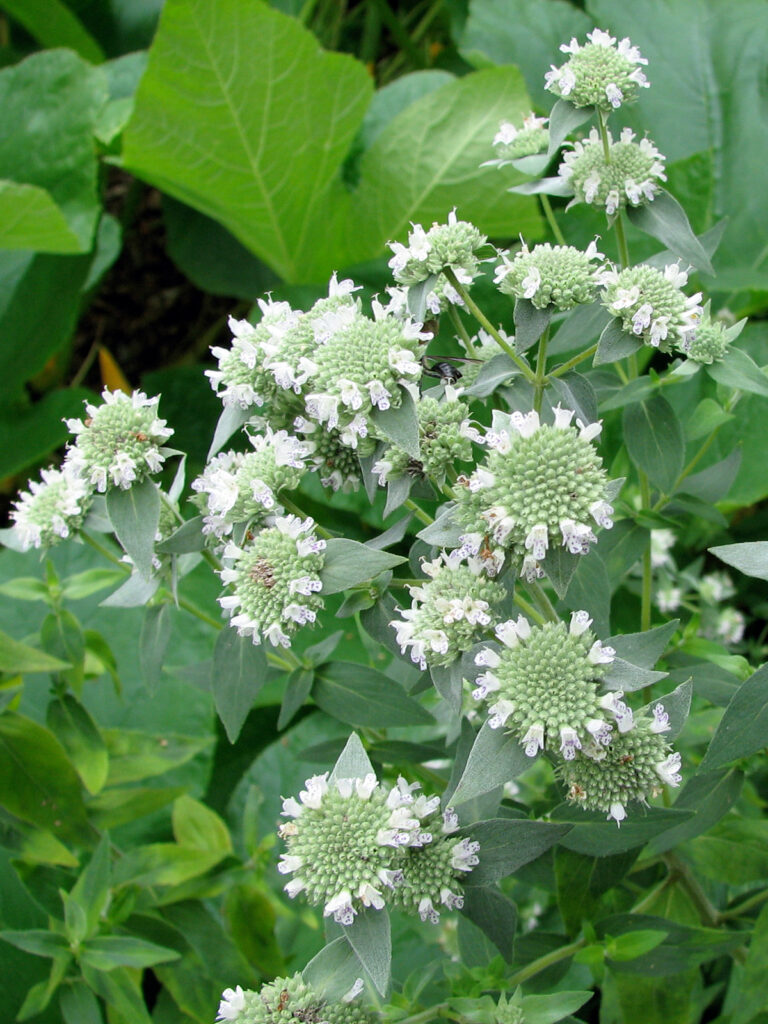
Mountain mint isn’t grown for its flowers (though the whitish haze of a large patch of these is nice) but it is an excellent nectar plant. What I most like about mountain mint is its unbelievably intense minty fragrance.
Deer resistance: High
** SPECIAL VALUE TO NATIVE BEES **
** SPECIAL VALUE TO BUMBLE BEES **
** Attracts predatory or parasitoid insects that prey upon pest insects **
- Learn more:
- Wildflower Center: Hoary mountain mint
Clustered mountain mint (Pycnanthemum muticum)
aka Short-toothed mountain mint
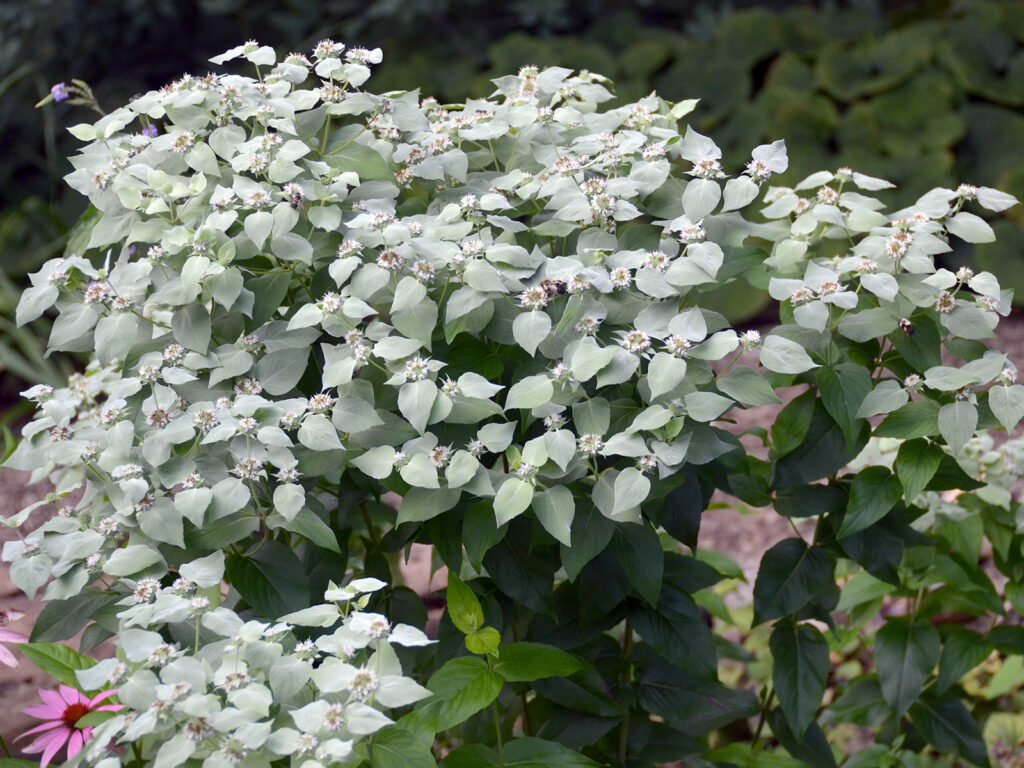
This mountain mint isn’t necessarily grown for its flowers, but for the whitish sepals. A large patch of these is impressive. I grow it for its appeal to insects (and because I love to crush and sniff the fragrant leaves). It’s a bee and wasp magnet (BUT they’re NOT aggressive and I love watching them up close!)
I got this plant at the 2015 HGCNY Wild Ones plant sale.
From NY Flora Assoc. blog: “Seven species of mountain mint (Pycnanthemum spp.) are found in New York. Of these, four are state listed as either threatened or endangered. These mountain mints include: blunt (P. muticum), whorled (P. verticillatum var. verticillatum), basil (P. clinopodioides), and Torrey’s (P. torreyi).”
Deer resistance: High
** SPECIAL VALUE TO NATIVE BEES **
** SPECIAL VALUE TO BUMBLE BEES **
** Attracts predatory or parasitoid insects that prey upon pest insects **
- Learn more:
- Wildflower Center: Clustered mountain mint
- The Natural Web: What do juniper hairstreaks and cedar waxwings have in common?
Slender-leaved mountain mint (Pycnanthemum tenuifolium)
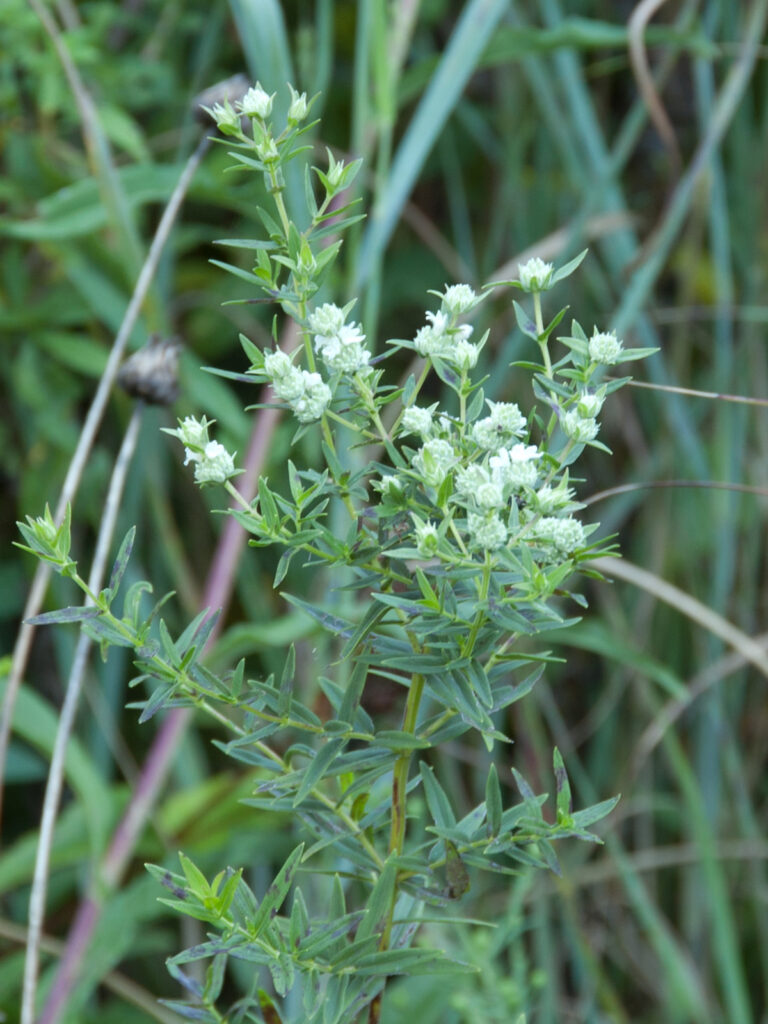
This is another species of mountain mint, but this one has small white flowers that are actually flowers, rather than P. incanum’s little florets around the edge. It’s probably less showy than P. muticum, but it’s nice to have some diversity. This species also has an intense mint scent. Even though it’s a mint, I haven’t found that it spreads much. In fact, I thought it had died out when I found this single stem still growing.
Wildlife: Bees, butterflies; numerous animals eat seeds
Deer resistance: No
** SPECIAL VALUE TO NATIVE BEES **
** SPECIAL VALUE TO BUMBLE BEES **
** Attracts predatory or parasitoid insects that prey upon pest insects **
- Learn more:
- Wildflower Center: Slender-leaved mountain min
- NC State Extension: Pycnanthemum tenufolium
Whorled (Hairy) mountain mint (Pycnanthemum verticillatum)
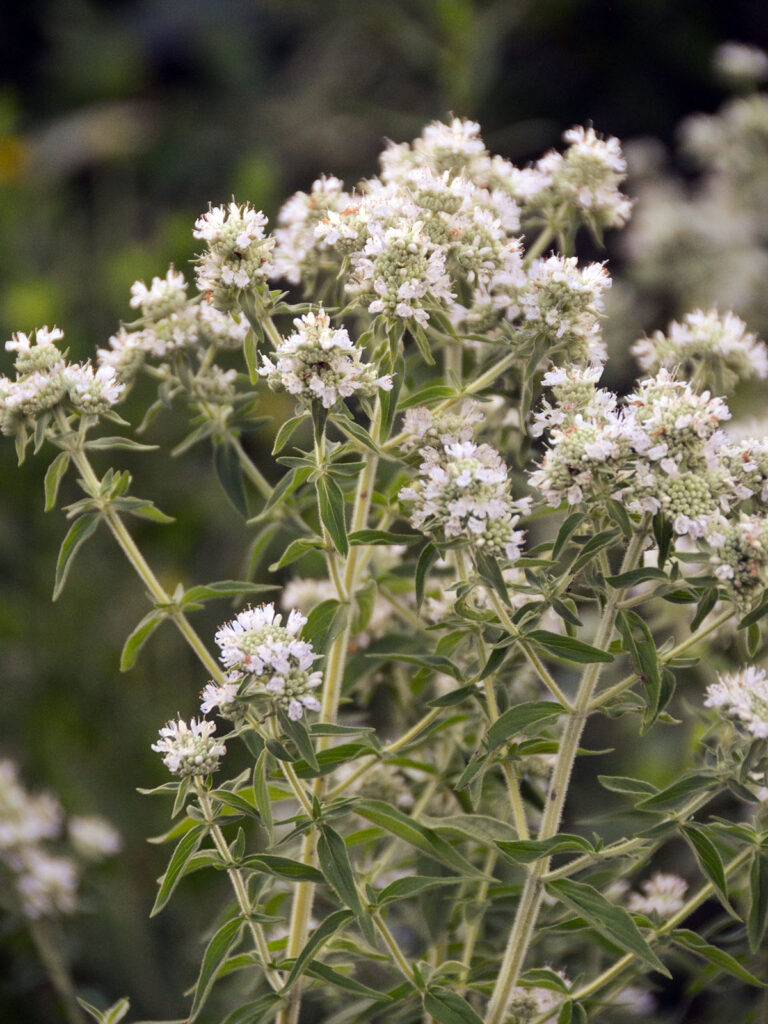
We planted this in 9/19 to add to our collection of mountain mints.
We like mountain mints so much that we wanted to see how this one differs from the others.
The image below shows one difference: It seems to spread a lot more!
In this location, it’s not a problem since it can find its way through the bushes in the habitat hedgerow, serving as a form of ground cover.
In other areas of the yard, though, the usual species work better.
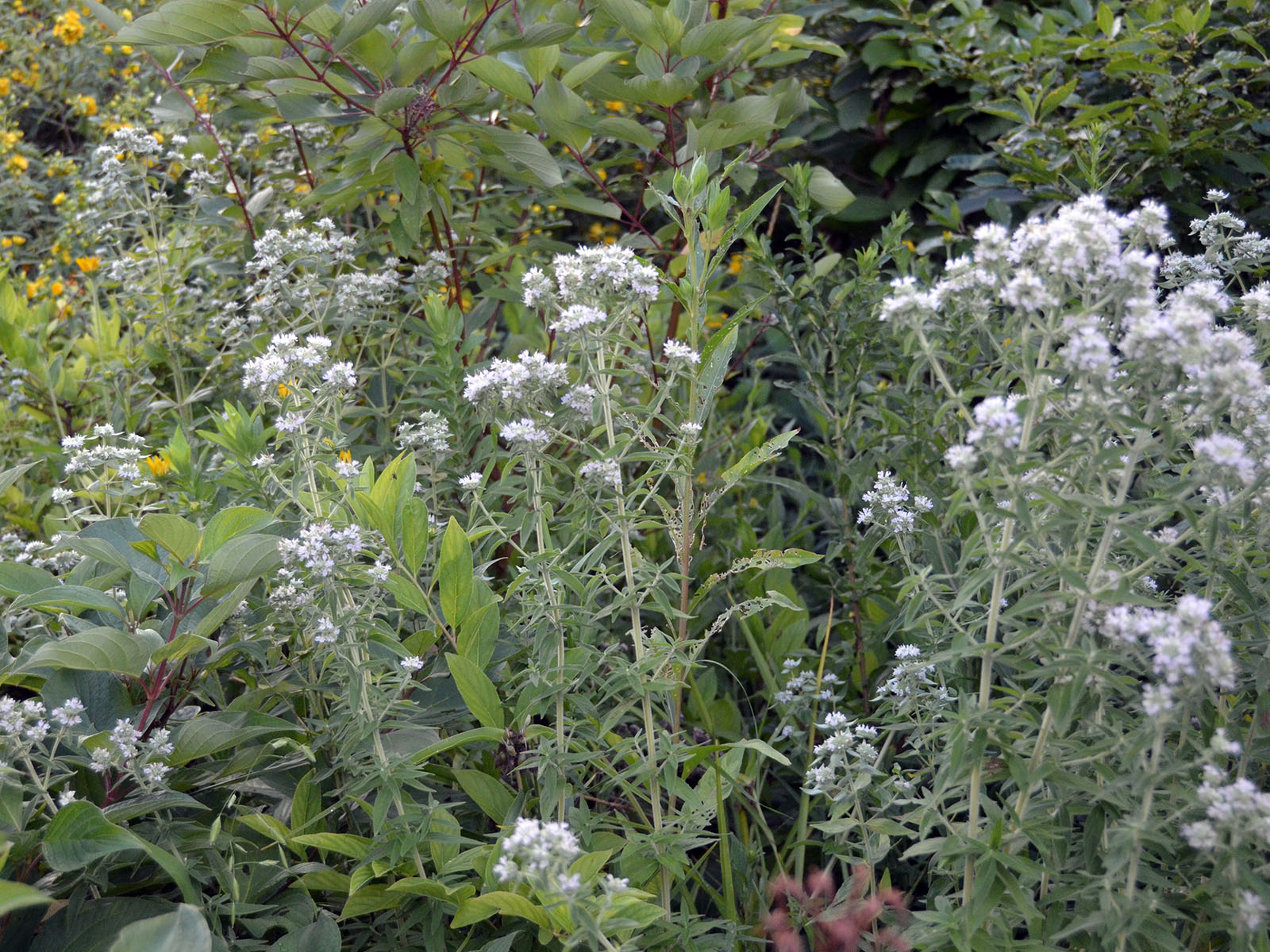
- Learn more:
- Wildflower Center: Whorled mountain mint
Virginia mountain mint (Pycnanthemum virginianum)
TBD
- Learn more:
- Wildflower Center: Virginia mountain mint
